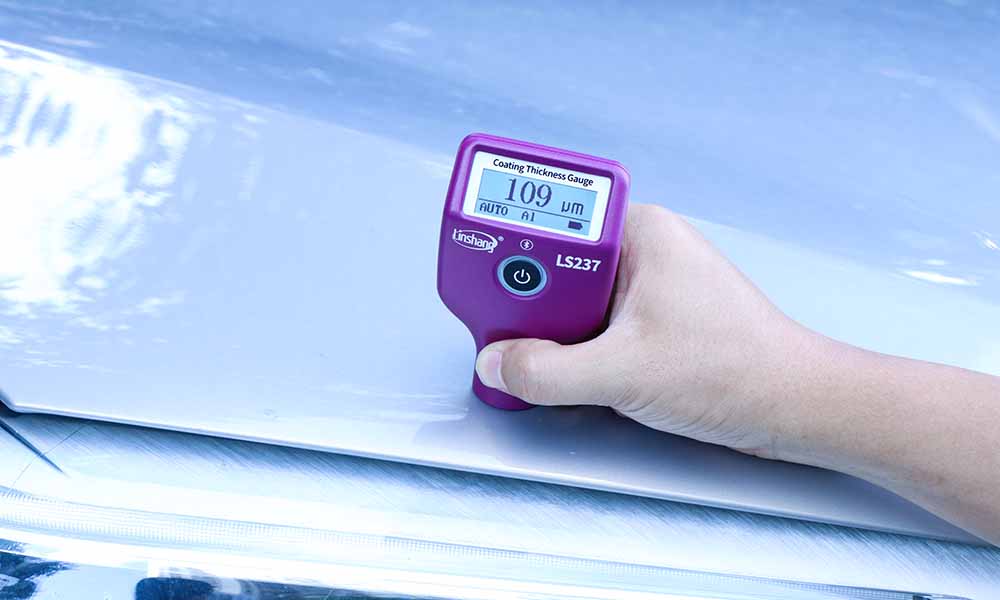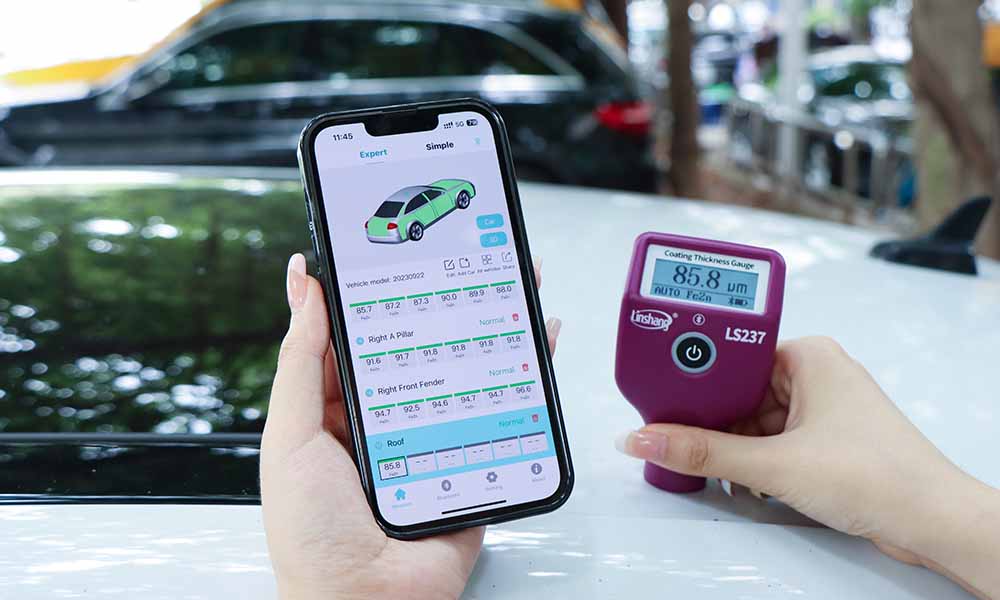How to use Linshang’s new car paint tester?
How to use the new LS237 car paint tester launched by Linshang? Don’t worry, this article will tell you.

The role of car paint tester in used car inspection
For many used car dealers, inspecting used cars is a relatively complex and important task. Used car inspection can be divided into multiple steps such as vehicle information verification, fire inspection, blister inspection, major accident inspection, and appearance inspection. Among them, the configuration of vehicle-related internal components can be determined from the traces of use and damage, but the modification of the appearance and the detection of major accidents are not easy to judge with the naked eye. At this time, you need the help of a car paint tester. The car paint tester can measure the paint thickness of the vehicle to determine whether the vehicle has been scratched, scratched, deformed, rusted, damaged, etc.
Introduction to the functions of Linshang’s new car paint tester
Linshang's new LS237 car paint tester is a professional instrument for testing the thickness of automobile paint. It can detect iron, aluminum body, iron galvanization, non-metal parts, and can automatically complete substrate conversion in iron/aluminum mode. In automatic mode, the instrument can intelligently identify iron powder putty and its thickness to help vehicle detection and quickly identify finishing vehicles. The instrument also adopts a user-friendly design, displaying different screen backlight colors and indicator light colors based on the measured car paint thickness, giving intuitive reminders. Linshang's new LS237 car paint tester retains the classic functions of the paint film meter, and adds new functions such as a rotatable screen and display of mobile phone numbers upon startup to prevent loss, further assisting second-hand car dealers in vehicle inspection, making it more efficient, reliable and intuitive.
How to use Linshang LS237 car paint tester
How to measure
Short press the power button to turn on the instrument, and the screen will display the set mobile phone number, which can prevent the instrument from being lost. After entering the measurement interface, place your thumb on the groove of the instrument, pinch the instrument, and press it vertically downward on the surface of the vehicle. The measurement data can be obtained in about 0.5 seconds.
How to zero
When zeroing, you need to adjust the zero on the iron-based and aluminum-based zeroing boards respectively. Use your thumb and index finger to pinch the groove below the instrument, press the instrument vertically on the zero adjustment plate, press and hold the button for about 3 seconds, follow the screen prompts to press the probe, and then follow the prompts to move the probe more than 15cm away from the zero adjustment plate. When the screen data displays 0, zero adjustment is completed. Test the zero adjustment board. If the data is 0, it means the zero adjustment is successful.
Car paint tester zero adjustment demonstration
How to charge
The instrument has a built-in rechargeable lithium battery that can be charged through the Type-C interface.

Instrument settings
In the off state, long press the button for 3 seconds to enter the main setting interface, long press the power button to enter the options, and short press the power button to confirm. You can select language, mode, unit, resolution and whether to turn on three-color display and rotating screen.
Use of APP
By connecting the APP via Bluetooth, the paint thickness of multiple parts of the vehicle can be measured online, the test data can be generated into a vehicle inspection report, and the report can be saved or shared with others in a variety of ways.

Car paint tester connection APP
The above is how to use Linshang’s new LS237 car paint tester. If you want to know more information, please contact us.
- UV Energy Meter | Knowledge You Should Know When Buying Manicure lamps!
- Optical Density Measurement Using Optical Density Meter
- How to Improve the Surface Gloss of Food Packaging?
- What is the Standard GU for Spray Gloss? How to Choose Spray Gloss Meter?
- Mist Material Optical Transmission Meter
- How to Choose UV Light Meter?